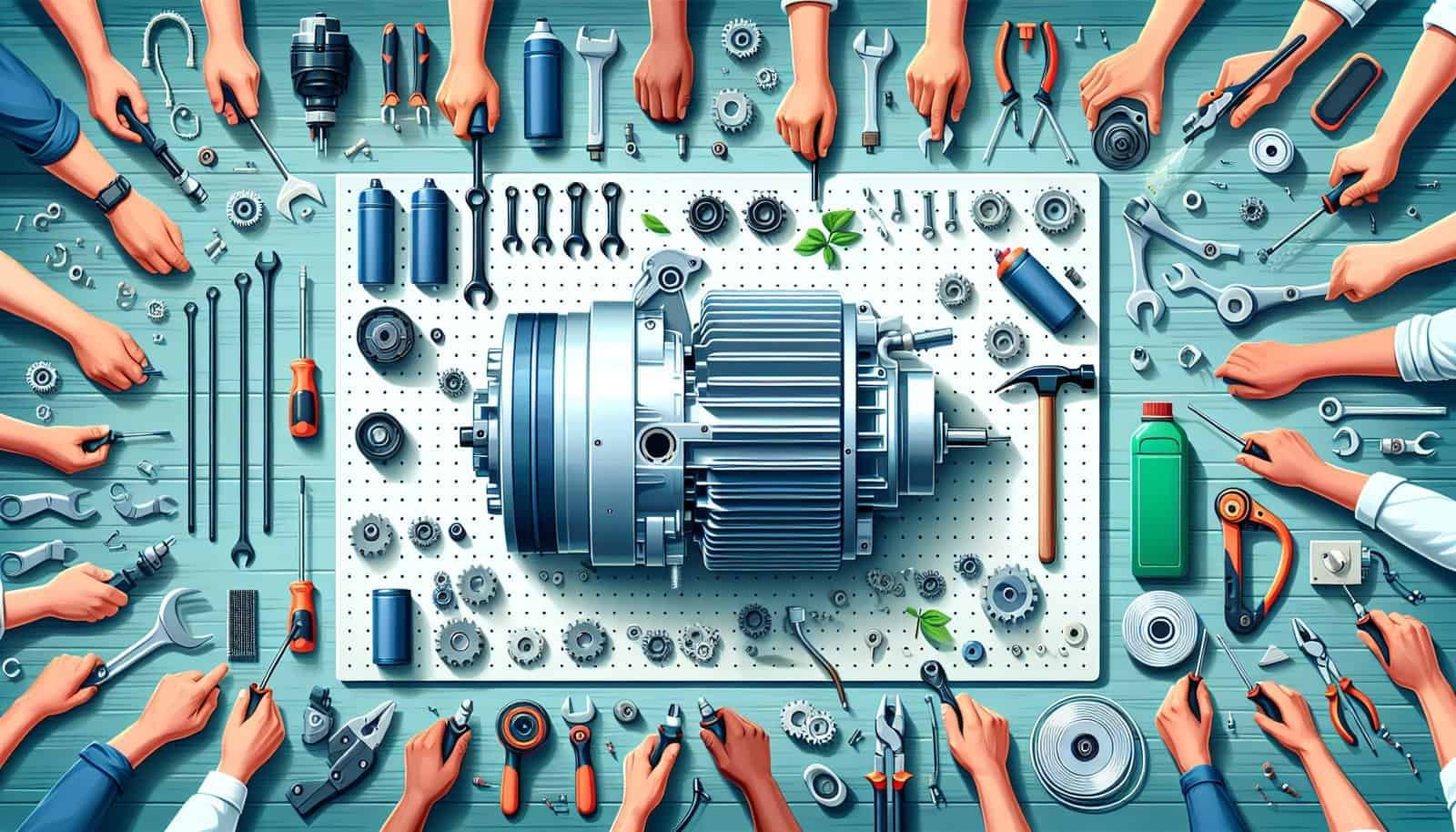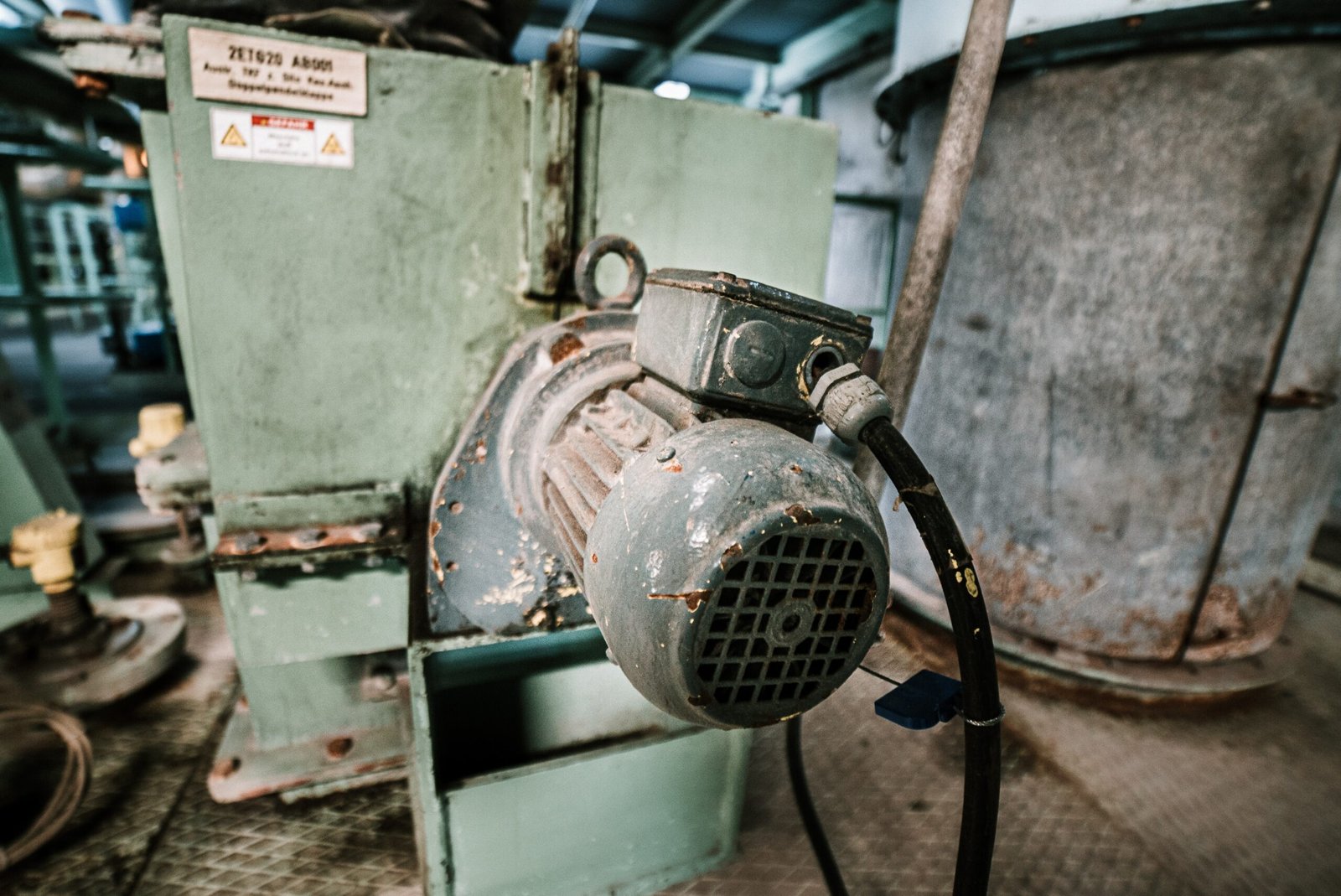Maintaining the electric motor of your electric bike is crucial for its optimal performance and longevity. From regular cleaning to inspecting the components, a few simple maintenance steps can go a long way in ensuring a smooth and enjoyable ride. In this article, we will take a closer look at the various maintenance tasks you should undertake to keep your electric motor running smoothly and efficiently. So, let’s get started and learn how to take care of your electric bike’s motor to keep the wheels turning effortlessly.
Cleaning
Removing Dust and Dirt
To keep your electric bike running smoothly, it is important to regularly clean it to remove any dust and dirt that may accumulate. Start by using a soft cloth or sponge to gently wipe the exterior of the bike, paying special attention to the areas around the motor and battery. This will help prevent any debris from interfering with the motor’s performance.
Cleaning the Exterior
In addition to removing dust and dirt, it is also important to clean the exterior of your electric bike. Use a mild detergent mixed with water to gently scrub the frame and other parts of the bike. This will help remove any stubborn stains or dirt that may have built up over time. Be sure to rinse the bike thoroughly with water to remove any residue from the cleaning solution.
Cleaning the Cooling Vents
The cooling vents of the electric bike’s motor are crucial for preventing overheating. Regularly inspect these vents and clean them using a soft brush or compressed air. This will help remove any dirt or debris that may have accumulated and ensure proper airflow to keep the motor cool during operation. Proper cooling is essential for maximizing the lifespan of your electric bike’s motor.
Cleaning the Connectors
The electrical connectors on your electric bike play a vital role in ensuring proper communication between various components. Over time, these connectors may accumulate dirt, which can interfere with their performance. Inspect the connectors regularly and clean them using contact cleaner or a mixture of rubbing alcohol and a cotton swab. This will help maintain good electrical conductivity and prevent any issues that may arise from dirty connectors.
Inspecting and Replacing Components
Battery Inspection
The battery is the heart of your electric bike, and it is important to regularly inspect it for any signs of damage or wear. Check for any physical damage, such as dents, cracks, or leaks. Examine the battery terminals and ensure they are clean and free from corrosion. If you notice any issues, such as reduced capacity or slower charging, it may be time to replace the battery.
Cable Inspection
Inspect all the cables on your electric bike, including those connecting the battery, motor, and display. Look for any signs of fraying, cracks, or exposed wires. Damaged cables can lead to electrical issues or even safety hazards. If you notice any damage, it is crucial to replace the cables promptly to ensure the safe operation of your electric bike.
Shifting System Inspection
If your electric bike has a shifting system, regularly inspect it for smooth operation. Check the cables, derailleur, and shifters for any signs of damage or misalignment. Make sure the gears shift easily and accurately. If you notice any problems, consider adjusting or replacing the shifting system components to maintain optimal performance.
Brake Inspection
Properly functioning brakes are essential for your safety while riding an electric bike. Regularly inspect the brake pads for any signs of wear and ensure they have sufficient thickness. Check the brake cables or hydraulic lines for any damage or leaks. Test the braking performance to ensure the brakes respond promptly and smoothly. If needed, replace the brake pads or make any necessary adjustments for optimal braking performance.
Tire Inspection
Inspecting the tires of your electric bike is crucial for both safety and performance. Check the tire treads for any signs of wear or damage. Ensure that the tire pressure is within the recommended range for your specific bike model. Riding with worn-out or improperly inflated tires can not only affect the handling and efficiency of your electric bike but also increase the risk of accidents.
Motor Inspection
Regularly inspect the motor of your electric bike for any signs of damage or abnormal noise. Look for any physical damage on the motor housing and ensure it is securely mounted. Pay attention to any unusual sounds coming from the motor during operation. If you notice any issues, it is recommended to consult a professional for further inspection and potential repairs.
Replacing Worn-Out Components
As you inspect various components of your electric bike, you may come across parts that are worn-out or no longer functioning optimally. It is important to replace these components promptly to maintain the overall performance and safety of your electric bike. Whether it’s a worn-out brake pad, a damaged cable, or a faulty sensor, replacing these components will ensure your electric bike operates at its best.

Lubrication
Applying Grease to Bearings
The bearings in the wheel hubs and crankset of your electric bike can benefit from regular lubrication. Using a suitable bicycle grease, apply a small amount to the bearings to ensure smooth rotation. This will help reduce friction and extend the lifespan of these critical components. Be cautious not to apply excessive grease, as it can attract dirt and cause more harm than good.
Lubricating Chains
The chain is an important component of your electric bike’s drivetrain system, and proper lubrication is essential for its smooth operation. Apply a few drops of bicycle chain lubricant along the length of the chain, and then use a rag to wipe off any excess. This will ensure that the chain moves freely and quietly, minimizing wear and improving overall performance.
Ensuring Smooth Pedal Assist
If your electric bike features a pedal-assist system, it is important to ensure that it operates smoothly. Regularly lubricate the pedal assist sensors and components using a silicone-based lubricant or a specific manufacturer-recommended product. This will help maintain accurate pedal-assist functionality and ensure a smooth and enjoyable riding experience.
Battery Maintenance
Proper Charging
To maximize the lifespan and performance of your electric bike’s battery, it is important to follow proper charging practices. Use the charger provided by the manufacturer and avoid using incompatible chargers. Fully charge the battery before each ride and avoid overcharging or leaving the battery plugged in for extended periods. Following these guidelines will help maintain the optimal capacity and lifespan of your electric bike’s battery.
Maintaining Optimal Temperature
Extreme temperatures can affect the performance and lifespan of your electric bike’s battery. Avoid exposing the battery to excessive heat or cold, as this can lead to reduced efficiency and potential damage. Store your electric bike in a cool and dry place when it is not in use, and avoid leaving it in direct sunlight for extended periods. Maintaining the optimal temperature range will help prolong the life of your battery.
Periodic Battery Testing
Regularly test your electric bike’s battery to ensure it is operating within the expected parameters. Many electric bike manufacturers provide diagnostic tools or smartphone apps that allow you to monitor the battery’s health and performance. Perform regular tests to check the capacity, voltage, and any potential issues indicated by the battery management system. This will help identify any early signs of deterioration or potential problems.
Battery Storage
If you plan to store your electric bike for an extended period, it is important to properly store the battery as well. Before storage, ensure the battery is fully charged. Disconnect the battery from the electric bike and store it in a cool, dry place. It is recommended to periodically charge the battery during storage to avoid deep discharging and maintain optimal performance.
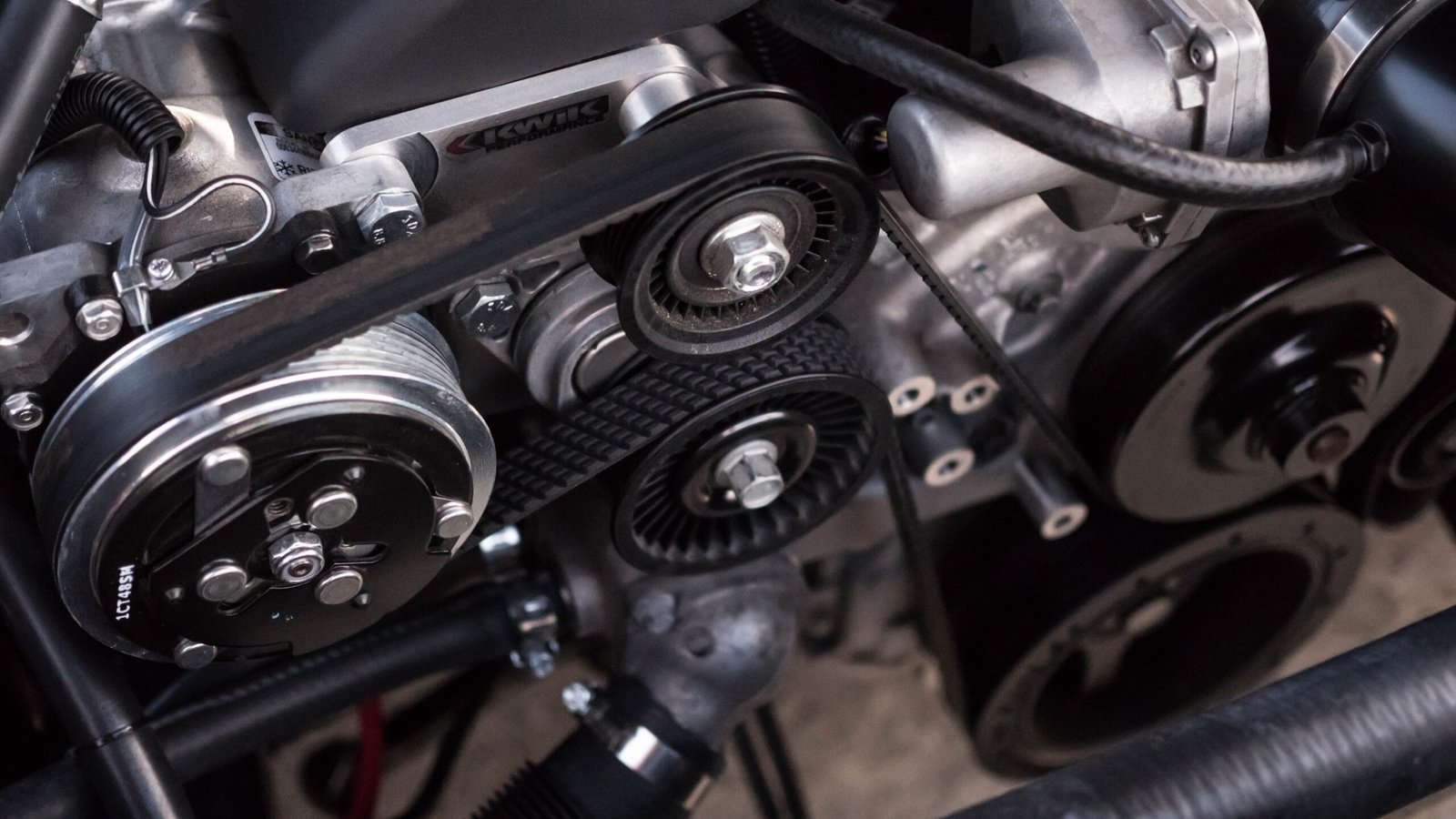
Wiring and Electrical Connections
Checking for Loose Connections
Regularly inspect all the wiring and electrical connections on your electric bike to ensure they are secure and properly connected. Check the connectors between the battery, motor, display, and other components. Tighten any loose connections and ensure that the wiring is routed correctly to prevent any interference or potential damage.
Inspecting Wiring Harness
Inspect the wiring harness of your electric bike for any signs of wear, fraying, or damage. The wiring harness is responsible for connecting various electrical components, and any issues can lead to electrical faults or malfunctions. If you notice any damaged wiring or exposed conductors, it is important to replace the affected sections promptly.
Protecting Exposed Wires
Exposed wires on your electric bike can be vulnerable to damage from moisture, dust, or physical impact. Inspect all the wires and cables, and if you find any exposed areas, protect them with electrical tape or heat shrink tubing. This will help prevent any potential short circuits or electrical hazards.
Repairing Faulty Connections
If you encounter any faulty connections during your inspections, it is crucial to repair them promptly. Use electrical connectors or soldering techniques to restore proper connectivity. Ensure that the repaired connections are well insulated and protected to prevent any future issues.
Motor Tuning
Adjusting Torque Sensor
If your electric bike is equipped with a torque sensor, it is important to ensure it is properly adjusted. A well-calibrated torque sensor provides smooth and responsive pedal-assist functionality. Consult your electric bike’s user manual or contact the manufacturer for specific instructions on how to adjust the torque sensor. This will help optimize your riding experience and maximize efficiency.
Calibrating Pedal Assist Threshold
Calibrating the pedal assist threshold involves adjusting the level of assistance provided by the motor in response to your pedaling. Most electric bikes offer multiple levels of assistance that can be adjusted to suit your preferences and riding conditions. Consult your electric bike’s user manual to learn how to calibrate the pedal assist threshold according to your desired level of assistance.
Fine-tuning Motor Settings
Some electric bikes allow you to fine-tune various motor settings, such as power output, throttle response, or speed limits. These settings can be adjusted to match your riding style, terrain, or range requirements. Refer to your electric bike’s user manual or contact the manufacturer for instructions on how to access and modify these settings. Fine-tuning the motor settings can greatly enhance your riding experience.
Updating Firmware
Keeping your electric bike’s firmware up to date can provide performance improvements and potentially resolve any known issues or bugs. Consult the manufacturer’s website or contact them directly to determine if any firmware updates are available for your electric bike. Follow the provided instructions to update the firmware and enjoy the benefits of the latest improvements and optimizations.
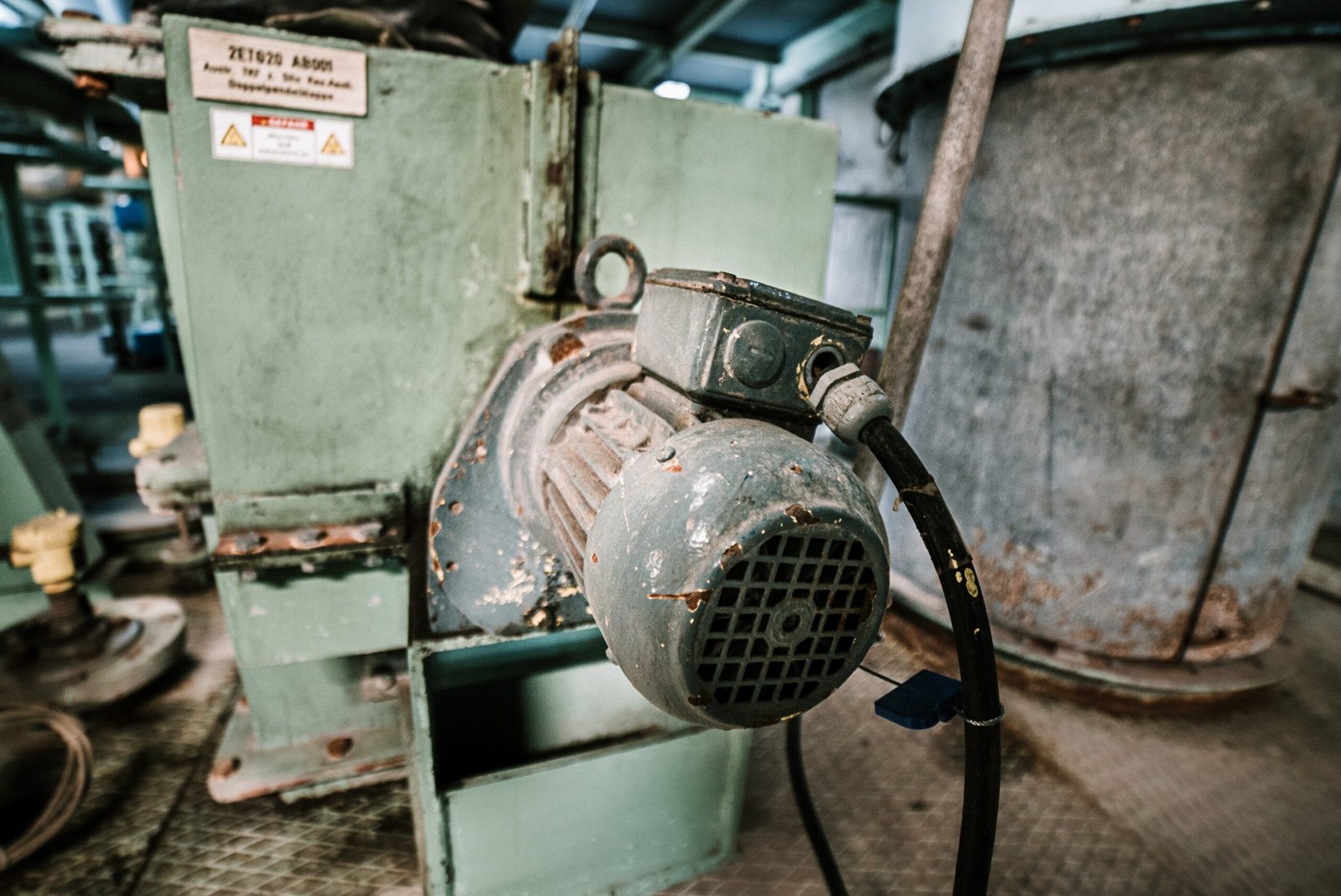
Performance Monitoring
Monitoring Speed and Acceleration
Regularly monitor the speed and acceleration performance of your electric bike to ensure it is operating at its best. Use a GPS-based cycling computer or smartphone app to track your speed and acceleration during rides. If you notice any significant deviations from the expected performance, it may indicate a potential issue with your electric bike’s motor or other components.
Checking Power Output
Monitor the power output of your electric bike’s motor to ensure it is delivering the expected performance. Some electric bikes provide built-in displays or smartphone apps that can show real-time power output. Compare the displayed power output with the specifications provided by the manufacturer. If you notice any significant differences, it may be worth investigating further or contacting the manufacturer for support.
Tracking Range and Battery Efficiency
Keep track of your electric bike’s range and battery efficiency to get a better understanding of its overall performance. Use the range estimation feature provided by your electric bike’s display or consult the manufacturer’s specifications to determine the expected range for your specific model. If you notice a significant decrease in range or reduced battery efficiency, it may indicate a battery or motor-related issue that requires attention.
Analyzing Motor Performance
To gain deeper insights into your electric bike’s motor performance, there are various tools and software available that can analyze motor data. These tools can provide valuable information such as power output, torque, and efficiency. By analyzing the motor performance, you can identify any potential issues or fine-tune the motor settings for optimal performance.
Safety Checks
Inspecting Brakes
Regularly inspect the brakes of your electric bike to ensure they are functioning properly. Check the brake pads for wear and replace them if necessary. Test the braking performance to ensure it is responsive and provides adequate stopping power. If you notice any issues, such as squeaking or reduced braking efficiency, it is important to address them promptly to ensure your safety while riding.
Testing Lights and Signals
Proper lighting and signaling are essential for your safety on the road, especially during low-light conditions or at night. Regularly test the lights and signals on your electric bike to ensure they are functioning correctly. Check all the bulbs, wiring, and connections, and replace any faulty components. It is crucial to be visible to other road users and make your intentions clear through proper signaling.
Verifying Suspension System
If your electric bike is equipped with a suspension system, it is important to regularly verify its performance. Check for any signs of damage or leaks in the suspension components. Test the suspension by compressing it and ensuring it rebounds smoothly. If you notice any issues, consult the manufacturer’s instructions or seek professional assistance to address any potential suspension-related problems.
Ensuring Proper Tire Inflation
Maintaining proper tire inflation is crucial for both safety and performance. Check the tire pressure regularly using a suitable tire pressure gauge. Refer to the manufacturer’s specifications for the recommended tire pressure. Riding with underinflated or overinflated tires can affect the handling and stability of your electric bike. Inflate the tires to the recommended pressure to ensure optimal performance and safety.
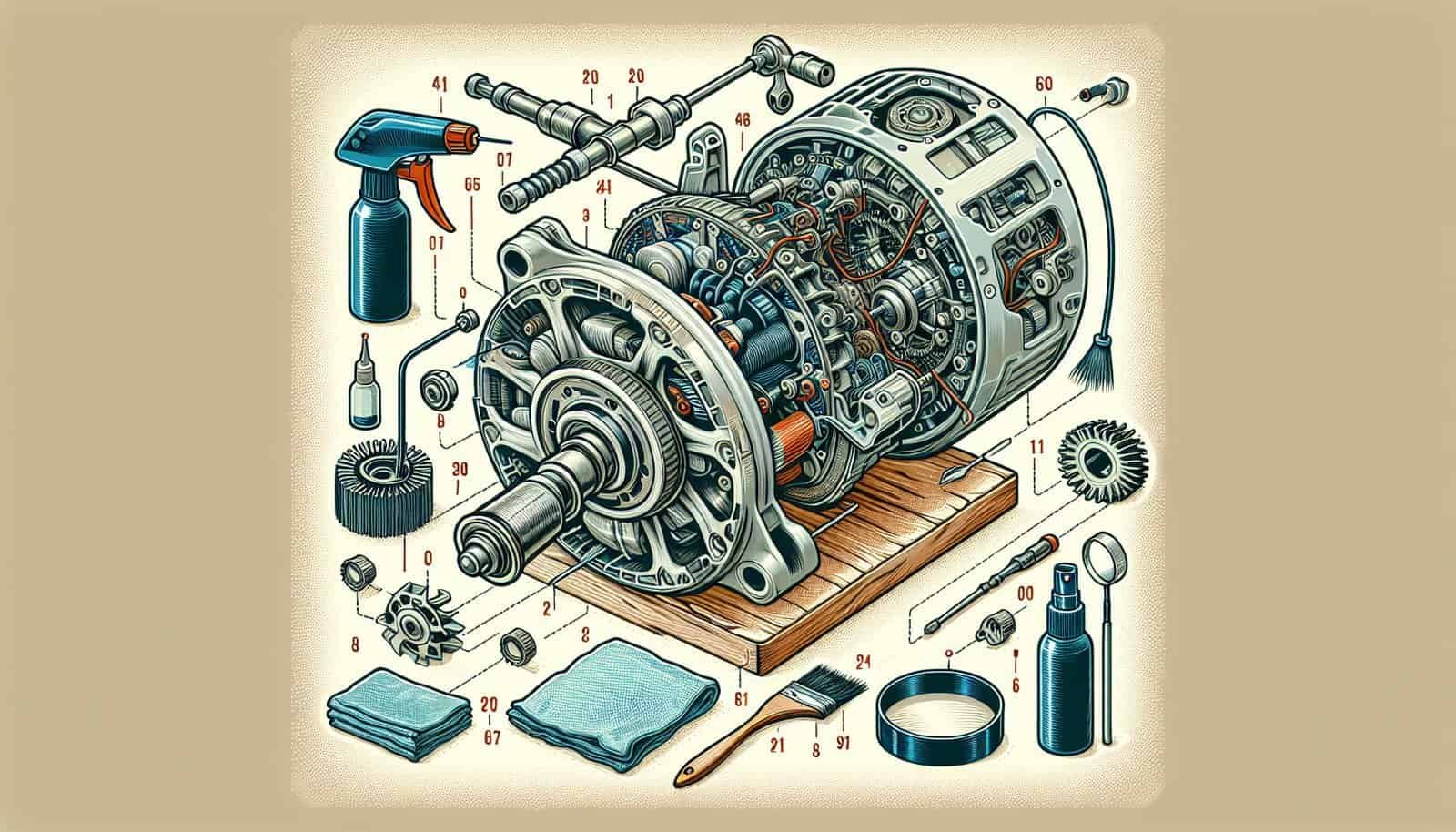
Riding Conditions
Avoiding Extreme Temperatures
Extreme temperatures, whether excessively hot or extremely cold, can affect the performance and lifespan of your electric bike’s components. Avoid riding in extreme weather conditions whenever possible, as it can lead to reduced battery efficiency and potential damage to sensitive electronics. If you need to ride in extreme temperatures, take extra precautions such as providing proper insulation or cooling for the battery and motor.
Preventing Water Damage
While most electric bikes are designed to handle some level of moisture, it is important to protect them from excessive water exposure. Avoid riding through deep puddles or submerging the bike in water. If your electric bike does get wet, thoroughly dry it before storage or charging. Moisture can cause electrical issues and corrosion if not properly addressed.
Protecting from Dust and Debris
Riding off-road or in dusty environments can result in the accumulation of dust and debris on your electric bike’s components. Regularly clean and inspect your electric bike to remove any dirt or debris that may have accumulated. Pay special attention to the motor, battery, and connectors, as these areas are most susceptible to dust and debris build-up.
Avoiding Impact and Vibration
Impact and vibration can potentially damage various components of your electric bike. Avoid rough terrains, excessive jumping, or rough landings, as they can result in damage to the motor, battery, or other sensitive parts. Ensure that your electric bike is properly secured during transportation to prevent any unnecessary vibrations or shocks.
Professional Servicing
Scheduled Maintenance with Experts
While regular maintenance can be performed by the owner, it is also important to have your electric bike professionally serviced on a periodic basis. Schedule maintenance appointments with trusted electric bike experts or authorized service centers. They have the specialized knowledge and tools to perform thorough inspections, diagnose any potential issues, and maintain your electric bike’s optimal performance.
Major Repairs and Replacements
In the event of major repairs or component replacements, it is generally recommended to seek professional assistance. Major repairs, such as motor replacements or battery pack repairs, may require specialized knowledge and tools. Authorized service centers can ensure proper installation and compatibility of replacement parts, minimizing the risk of further damage or safety issues.
Troubleshooting Complex Issues
If you encounter complex issues with your electric bike that are beyond your ability to diagnose or repair, it is best to consult a professional. Complex electrical or mechanical issues may require in-depth knowledge or specialized diagnostic tools. Trusted electric bike experts or authorized service centers can provide the necessary expertise and guidance to troubleshoot and resolve these complex issues.
